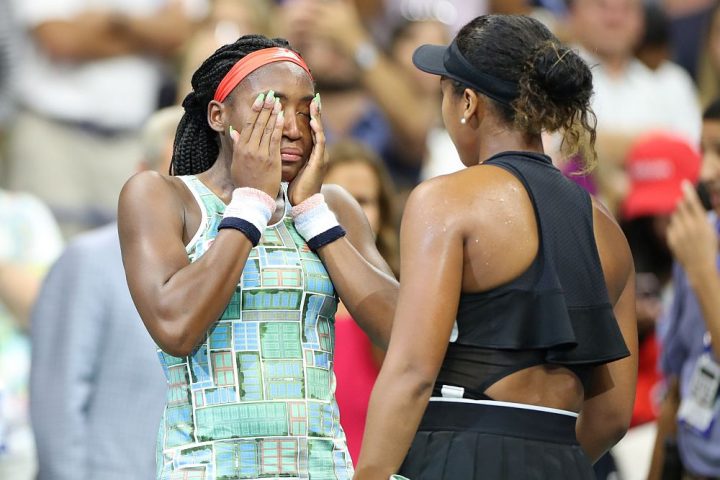It’s all but likely that Coco Gauff will be the future of women’s tennis, but for the time being, future can wait. This match had all the ingredients of a blockbuster: a 30-minute preview on ESPN before the start, the photographers’ ditch bursting at the seams, the red-fire sunset with Manhattan in the background and the amazing atmosphere created by the 23,771 spectators in Arthur Ashe Stadium. We had everything, but we didn’t have a match: the difference is still too big between the world n. 1 and a teenager who, as amazing as she can be, still had to receive an “illegal” wild card to access the main draw of this Grand Slam tournament. Osaka killed the match with her cross-court backhand, powerful and lethal, that nullified Gauff’s defensive magic tricks, trademark shots of a soon-to-be champion. In order to keep up with Naomi’s pace, Coco drowned in 24 unforced errors (including seven double faults) in just 15 games, countered by only eight winners. Osaka’s tally, in the end, was a much healthier 17-24.
Naomi got away from the starting blocks like a rocket: she has shown time and time again how she can be super clutch in important matches. “This is like a final for her,” said Chris Evert live on ESPN as she was calling the match, and Osaka went up 3-0 in a flash using her powerful groundstrokes. Gauff was certainly quicker on court and more resourceful in defensive situations, but during power rallies the age difference was very noticeable. Luckily for her, CoCo is an amazing match player and immediately started slicing some backhands to disturb Osaka’s shot-making, but with only limited results.
Despite some first serves that wouldn’t be out of place in a men’s match, it was very much a returners’ game on second serves, to the point that from 3-1 Osaka there were four straight breaks. With a few short cross-court backhands, the world n.1 closed the first set by 6-3 in 36 minutes.
A few double faults, as well as a series of unforced errors by a free-swinging Gauff, sealed the fate of the match early in the second set, as Osaka managed to come back from 0-40 in the third game with some very impressive defensive points.
The match ended with a 6-3, 6-0 after only 65 minutes, with the two players remaining for a few minutes to talk by the umpire’s chair as Osaka invited Gauff to have the on-court interview with her.
https://twitter.com/usopen/status/1167983412239642624
“For me, at least when I lose, I just come into the locker room and I cry, then I do press – explained Osaka to the journalists – […] I was thinking normal people don’t actually watch the press conferences unless they’re [hard core] fans. The people that are out there, they’re probably going to just stay and watch the next person who’s playing, then they go home, and they wouldn’t know immediately what’s on her mind. I was just thinking, it would be nice for her to address the people that came and watched her play. They were cheering for her”.
Gauff commended her opponent both on the court and during the press conference for her action: “I definitely was wanting to leave the court because I’m not the type of person who wants to cry in front of everyone. I didn’t want to take that moment away from her, as well. She told me it’s better than crying in the shower. She convinced me multiple times to stay. I kept saying no. Finally I said, Okay, I’ll do it. Because I didn’t know what to do. I’m happy that she kind of convinced me to do it because, I mean, I’m not used to crying in front of everyone”.
The world n.1 wrote a little piece of history on Arthur Ashe Stadium with her unusual behavior and her kind words for her opponent and her parents. The tearful ending will remain in everyone’s memory for some time, but most importantly it marks the beginning of what could become a rivalry that women’s tennis could cherish for many years to come.






